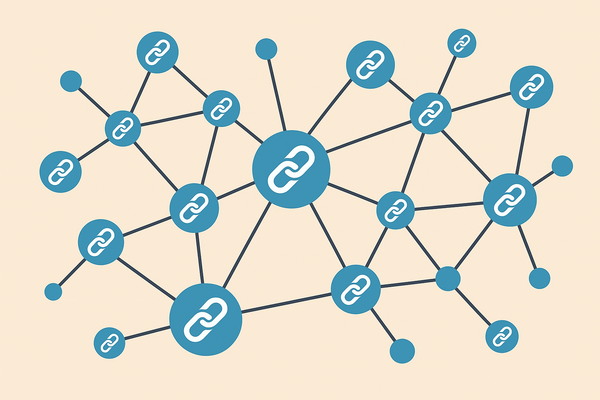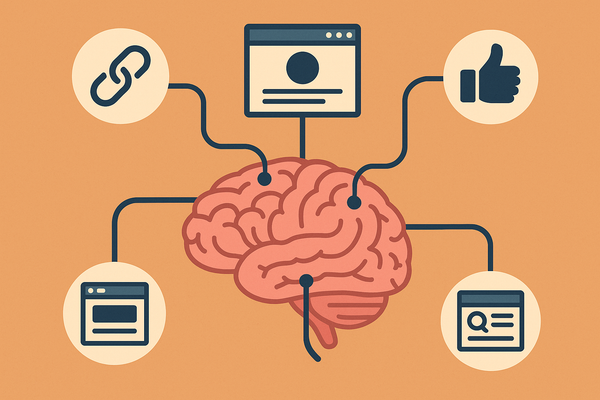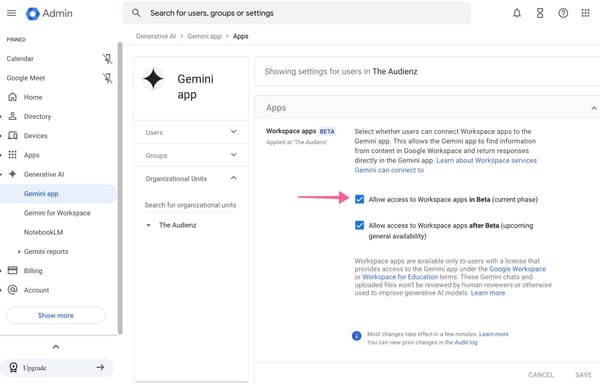Vibe Marketing: The Exhilarating Future of Branding and Content

“We are required to believe in something that doesn’t exist in order to allow it to come into being.”
― Rick Rubin, The Creative Act: A Way of Being
Hard sell is dead. Today’s most magnetic and successful brands aren’t shouting features but whispering feelings. Vibe marketing has become the real MVP in a world where consumers scroll and tap past ads in milliseconds.
It's not about what you sell, but how you make people feel—the mood, the aesthetic, the unspoken “I get you.”
From punk-rock hydration to skincare that slaps on stickers, brands are ditching traditional pitches to appeal to emotional resonance, cultural energy, and community fluency.
Discover vibe marketing, how it connects to vibe coding, how it can be applied in various industries, who’s using it, and how SEO agencies can leverage vibe marketing to enhance their strategies and benefit your brand.
Vibe Marketing Origin Story: Software Development Or Metaphor?
Before vibe marketing was “the vibe,” there was vibe coding. This new trend refers to an AI-dependent programming technique in which developers describe a problem in natural language, and AI models generate the corresponding code and fix bugs.
Coined by OpenAI co-founder Andrej Karpathy in February 2025, this approach shifts the programmer's role from manual coding to guiding and refining AI-generated code.
Here’s “that” tweet:
In marketing, vibe coding has been adapted metaphorically to describe the deliberate crafting of a brand's emotional and aesthetic identity.
It uses colors, sounds, fonts, and formats to trigger specific moods and feelings, creating a cohesive and resonant brand experience. Just as if you tell AI what your favorite brand would look, feel, smell, and sound like.
Vibe Marketing Explained
Vibe marketing kicks in when you stop playing air traffic controller for a dozen marketing tasks and just let AI fly the plane. It’s not about replacing creativity—it’s about unchaining it from the to-do list.
Listen up: no more switching between writers, designers, schedulers, and data detectives. With vibe marketing, AI agents are trained to handle it all. You say, “Give me five variations of this post,” or “Turn this blog into a LinkedIn thread,” - Then use an AI LinkedIn Post Generator like ContentIn, schedule a bunch of posts, an and boom—it’s done. Fast. Sharp. On-brand.
It’s vibe coding for marketers. Like devs use natural language prompts to build software, you’re giving smart instructions and watching AI bring them to life. No spreadsheets.
No chaos. You’re not elbow-deep in dashboards—you’re making decisions, not clicking buttons. Strategy becomes your zone. Execution? That’s the AI’s gig.
The vibe? Minimal effort. Maximum output. Creative flow, uninterrupted.
You still lead with ideas—but now you’ve got a reliable sidekick managing the busywork, tracking performance, and keeping the momentum alive. You stay in your genius zone; the AI keeps the machine grinding.
This isn’t automation in a suit. It’s marketing on your terms, with your style, and your spark, just with way less clutter.
Welcome to the modern way of marketing, which is: talking to AI.
Your Marketing Is Catching Feelings
Vibe marketing focuses on aligning content with the right mood or feeling to resonate deeply with consumers. Here are some core components of how vibe marketing works:
1. Emotional Triggers
The first step to effective vibe marketing is understanding emotional triggers. These are the psychological elements that prompt emotional responses in individuals, such as:
- Nostalgia: Evoking past experiences to create a sense of longing.
- FOMO (Fear of Missing Out): A strategy to drive urgency and excitement.
- Trust: Building relationships based on reliability and credibility.
- Excitement: Energizing the audience with new ideas, opportunities, or products.
By tapping into these emotions, brands can establish strong connections with their audience, leading to greater engagement and a loyal customer base.
2. Targeted Messages
Once you understand your audience’s emotional triggers, crafting a message that aligns with those emotions is paramount. This could be done through various forms of content, such as videos, social media posts, ads, blog posts, and more.
Think:
- A luxury car brand might focus on evoking excitement and exclusivity.
- A mental health app might focus on creating a sense of calm and trust.
3. Design and Aesthetics
A big part of vibe marketing is ensuring the design and aesthetic of a campaign, website, or social media post match the emotional tone. The visuals you use—colors, fonts, layout, and images—must all reflect the vibe you're trying to create.
For instance, warm, soft tones evoke a feeling of comfort, while bold, vibrant colors generate excitement and energy.
Who’s Feeling The Vibe in 2025?
As vibe marketing grows in popularity, more and more brands across industries are adopting it. Here’s a closer look at the types of businesses embracing vibe marketing and how they’re doing it:
1. Personal Brands and Influencers
Personal brands and influencers are experts in vibe marketing because they must cultivate an authentic emotional connection with their audience to thrive. They often use vibe marketing to build followers' trust, loyalty, and excitement.
2. Digital Ventures
Startups and digital ventures increasingly use vibe marketing to build brand identities that resonate with their target audiences.
3. Large Corporations and Tech Companies
Even large corporations and tech companies like Apple and Nike have mastered vibe marketing. For example, Apple’s “Think Different” campaign taps into feelings of innovation, creativity, and individuality, creating strong emotional connections.
Top Brands’ Vibes Dissected
These brands aren’t just selling products—they’re a force of sale. That’s the heartbeat that keeps Vibe Marketing going.
In-Depth Look: Glossier's Vibe Marketing Tactics
Glossier continues to innovate its marketing strategy by embracing the vibe marketing principle. Their key initiatives so far have included:
- Experiential Pop-Ups Glossier launched the "Realms of You" pop-up in London, focusing on its "You" fragrance. This immersive experience features sensory-stimulating rooms that evoke emotional connections with the brand.
- Influencer and Ambassador Programs Glossier leverages a network of micro-influencers and brand ambassadors to create authentic endorsements. The brand fosters community and authenticity by involving loyal customers in product launches and promotions.
- User-Generated Content and Meme Culture The brand actively incorporates user-generated content and embraces meme culture to engage with its audience. This approach boosts brand authenticity and creates a sense of community among customers.
- Social Commerce Integration Glossier has been at the forefront of social commerce, utilizing platforms like Instagram and TikTok to facilitate seamless shopping experiences. The brand turns social engagement into sales by integrating product tags and leveraging user-generated content.
- Customer Feedback Loops The brand actively asks for feedback from its community, using input to guide product development and improvements. This participatory approach makes customers feel heard and valued, strengthening brand loyalty.
Through these initiatives, Glossier has successfully transitioned from traditional marketing methods to a vibe marketing approach, creating deeper emotional connections with its audience and fostering a loyal community around its brand.
Vibes Are A’ Changing (The Marketing Game)
The rise of vibe marketing is changing the way businesses approach marketing. Emotional resonance (empathizing, feeling, and genuinely connecting with others) becomes a key differentiator in a crowded marketplace.
As customers seek brands that align with their values and emotions, companies must shift from traditional transactional marketing to deeper, relationship-building strategies.
1. Long-Term Engagement
Vibe marketing creates long-term engagement by fostering a deeper emotional connection with consumers.
Over time, people will develop a sense of loyalty to brands they feel emotionally connected to, leading to repeat business and positive word-of-mouth referrals.
2. Personalization
Vibe marketing is inherently linked to personalization. As businesses continue to gather more data about their customers, they will be able to deliver even more tailored and emotional experiences.
This means that brands can speak directly to their customers' desires, challenges, and aspirations, creating an even stronger bond.
3. Integration with SEO
Vibe marketing complements SEO because both focus on understanding the audience and meeting their needs. SEO agencies like SWAT SEO can incorporate vibe marketing principles into their content strategies by creating emotionally engaging blog posts, social media posts, and other digital content that resonates with the target audience.
Combining SEO with vibe marketing allows businesses to optimize their visibility while fostering stronger emotional connections with their audience.
For example, SEO-optimized content can be crafted to align with specific emotional triggers, enhancing engagement and encouraging customers to take action.
The SEO / Vibe Marketing Alliance
SEO is evolving to match emotional search behavior. These are new ways to apply to your texts to boost optimization.
Ways SEO Agencies Help Vibe Brands:
- Keyword Mapping → Match emotion-first queries like “skincare that feels good”
- Content Clustering → Organize mood-based blog journeys
- Meta Content Optimization → Use titles that match emotional resonance, not just CTR tricks
- Visual SEO → Tag images and alt-text with aesthetic cues
- Sentiment Analytics → Monitor how vibe-driven content feels to the audience
- Platform Sync → Ensure vibe works across web, search, and social
In short: SEO makes sure your vibe gets found, specially interesting when doing SEO for Startups
Glossary: Speaking Vibes
Vibe Marketing
Branding through feeling. Less “why this product works” and more “how this product fits your life.” It’s about emotion, community, and aesthetic identity.
Vibe Coding
AI programming technique where a person provides a natural language prompt to a large language model (LLM), which then generates the corresponding software.
Ghost Product
A product that sells not because of its utility, but because of its meaning, mystery, or irony.
Emotional Texture
Is it cozy? Gritty? Futuristic? That feeling is its emotional texture—deliberately designed to resonate. It’s the mood a post exudes.
Moodboard Marketing
When the aesthetic is the campaign, you post visual stories and ambient content instead of ads. It’s less “buy this” and more “feel this.”
Vibe-First CTA
Calls to action that match the brand mood:Instead of → “Buy Now”Try → “Feels like summer” or “Embrace the moment”
Micro-Aesthetic
Highly niche visual styles that speak to specific subcultures (like “clean girl,” “vintage academia,” or “futurist brutalism”).
Soft Signals
Visual and tonal cues that build identity without being explicit:Soft lighting, muted color palettes, poetic captions, or no captions.
Content Ambience
The overall vibe of a piece of content is determined by its tempo, audio, color tone, and rhythm. Think of a 20-second TikTok with slow transitions and dreamy synths.
Emotional Engagement Metrics
You’re not just tracking clicks anymore. Vibe marketing also measures these KPIs:
- Saves
- Shares
- Dwell time
- UGC (user-generated content)
- Emojis or mood reactions
Participatory Identity
When your audience wears your vibe like a badge, they post, remix, and speak your brand language because it’s theirs.
Vibe Stack
Your toolkit for creating consistent vibes:
- Canva templates
- Caption AI tools
- Color guides
- Gling for video editing
- Moodboards
Platform Vibe Sync
Adapting your tone to each space. On LinkedIn, you’re thoughtful and mission-driven. On TikTok, it’s soft chaos and close-up storytelling.
Cultural Resonance
When your brand’s emotional tone matches the culture’s mood, it's a win-win situation. (Glossier nailed this post-pandemic with self-care-first content.)
Vibe Preview
A micro-experience—like an ambient intro, teaser video, or interactive carousel—that gives your audience a taste of your world.
Anti-Ad Aesthetic
Making content that doesn’t feel like an ad. Think memes, ironic branding, minimal logos, or storytelling-first formats.
Don’t Kill The Vibe: Switch Funnels To Feelings
Let’s stop pretending people make decisions based on logic—they don’t. Sure, we love to justify our actions with logic, but the truth is that most choices start with a gut feeling.
We go with what feels right and reflects who we are or want to be. That’s precisely where vibe marketing steps in and wins.
In 2025 and beyond, brands that spark emotions, not just impressions, will dominate. People don’t forward ads because of stats or features. They share them because they feel something and want to share it with their loved ones.
If someone sends your campaign to a friend with a “This is SO us,” you’ve already won.
That moment is more than engagement—it’s endorsement.




